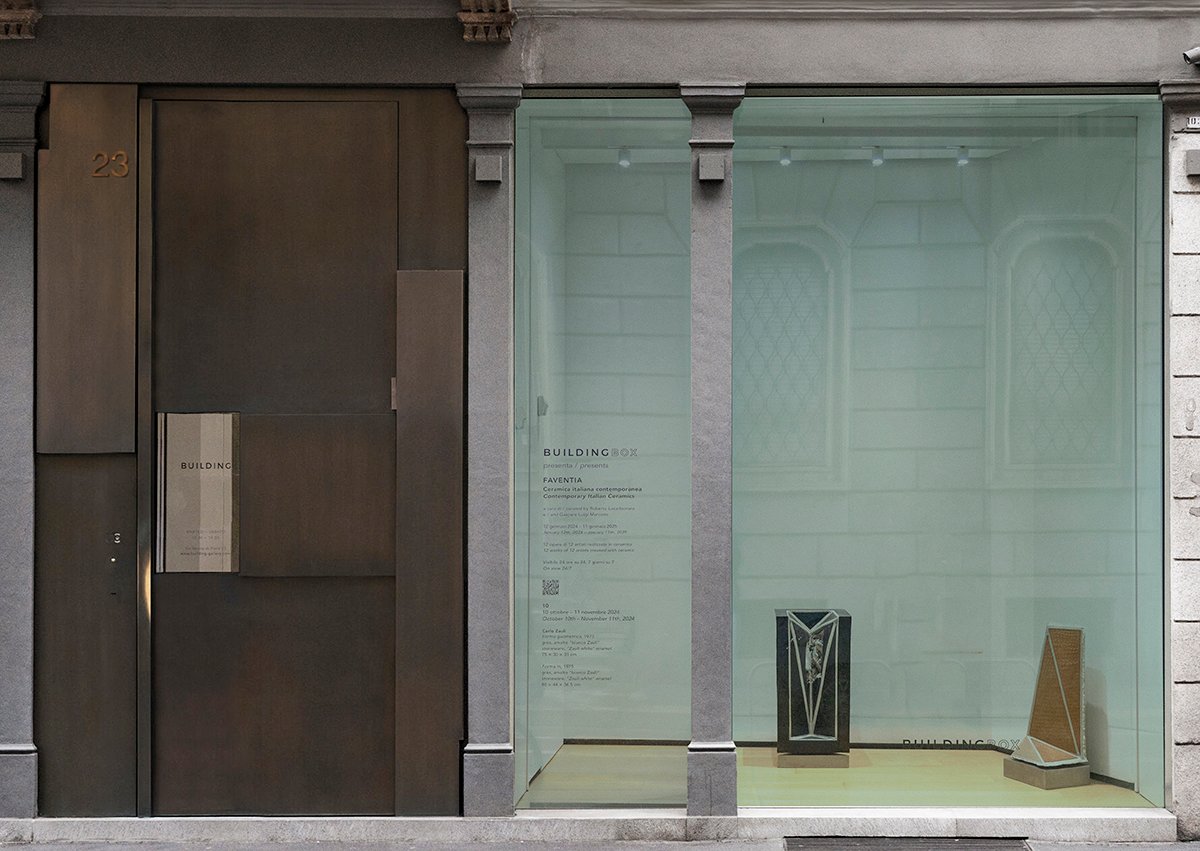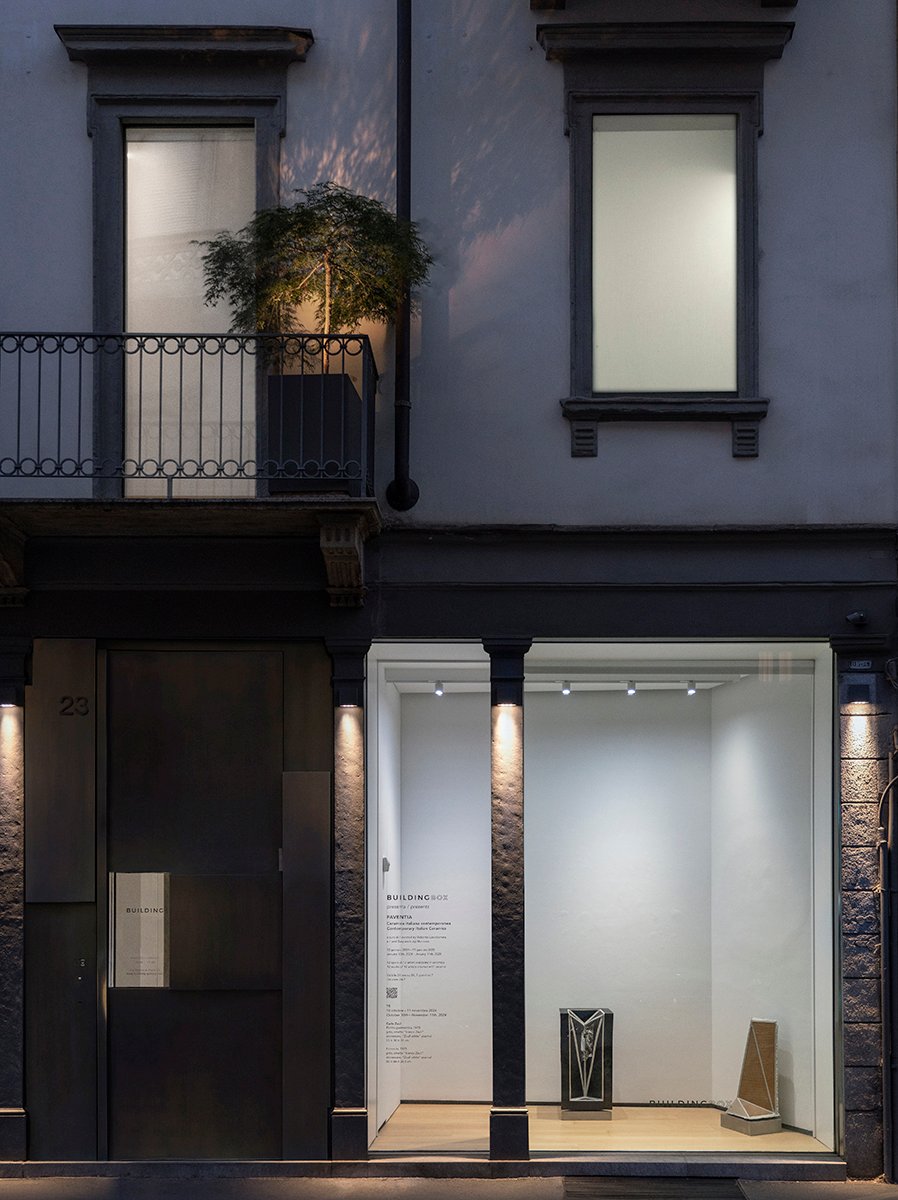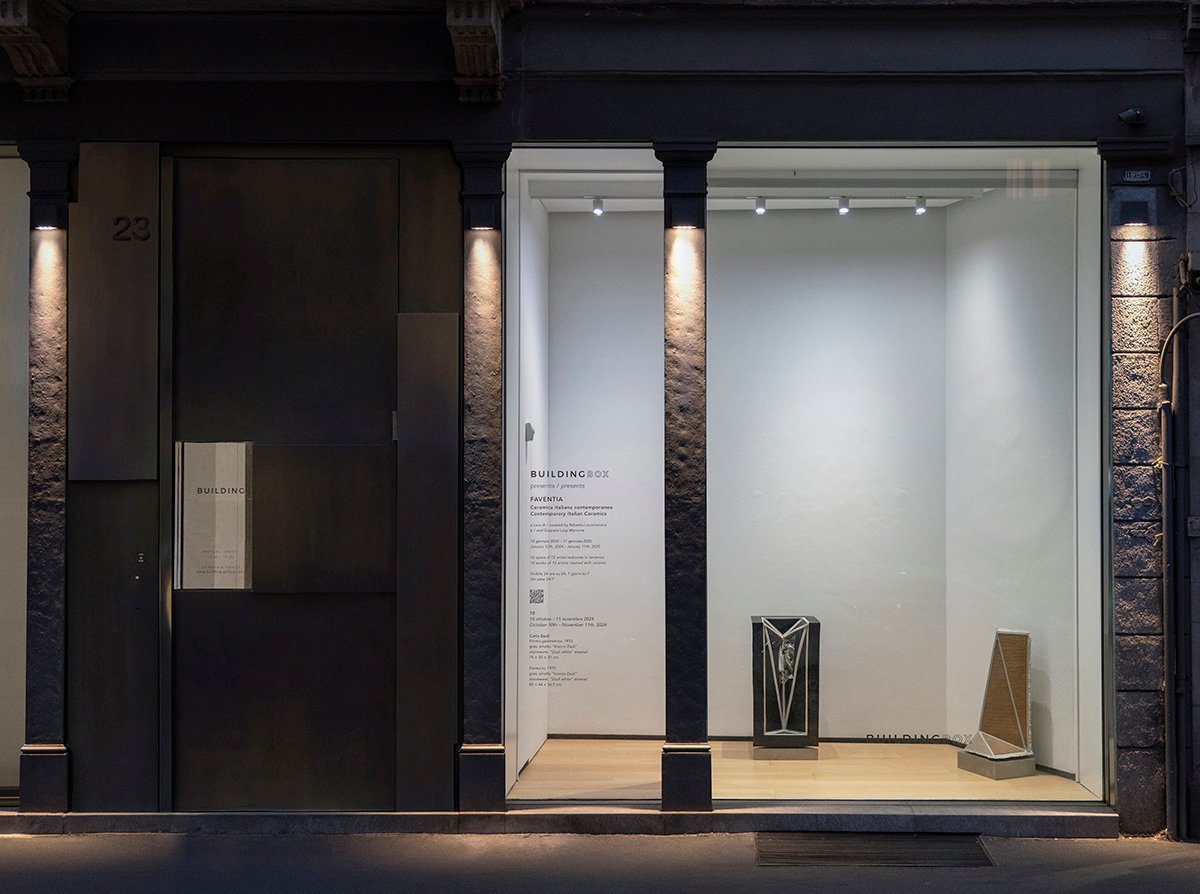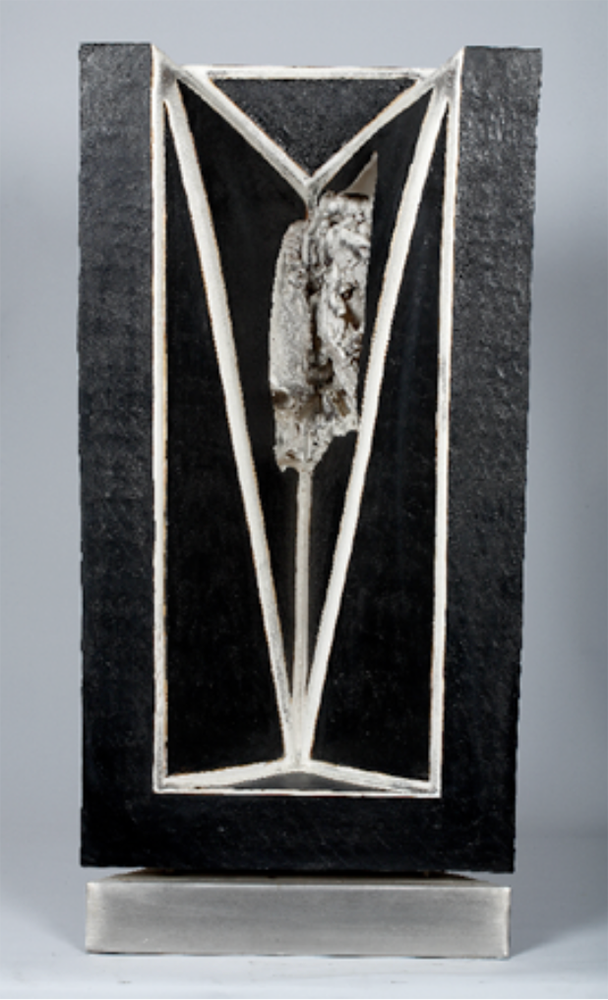FAVENTIA – 10/12. Carlo Zauli
10.10.2024 – 11.11.2024
From October 10th, 2024, to November 11th, 2024, BUILDINGBOX hosts the sculptures Forma geometrica (1973) and Forma In (1975) by Carlo Zauli (Faenza, 1926-2002).
The tenth installment of the exhibition FAVENTIA. Contemporary Italian Ceramics [Ceramica italiana contemporanea] is dedicated to the work of Carlo Zauli (Faenza, 1926-2002) with the sculptures Forma geometrica (1973) and Forma In (1975).
An experimenter of materials, firing techniques, glazes and colors, Zauli was among the artisans who elevated the ceramic tradition to a primary form of expression, overcoming the centuries-old distinction between major and minor arts, that, unfortunately, was still alive in the artistic scene of the ntury. It was Gillo Dorfles who succinctly defined Zauli as “among the very few Italian ceramists who are accomplished sculptors (although this distinction, in reality, no longer makes sense”. Zauli’s practice, while starting out from “traditional” techniques and practices, presents a plethora of experimentation and conceptual impulses that overturned certain dogmas and canons. The artist pursued his research in the field of sculpture with absolute freedom, establishing dialogues with architecture and public spaces, while not disdaining projects on an industrial scale and teaching activities (together with Bruno Munari, he was to be among the founders, and later also president, of the ISIA – Istituto Superiore per le Industrie Artistiche in Faenza). In the second half of the 1950s, he obtained the first 1200 ̊ white glazes that would later lead to the famous “Zauli Whites.” In the 1970s, the artist developed forms that might be defined as “geometric” – including his Forma geometrica (1973) and Forma In (1975) – experimenting with colors from dark to silver-white and creamy-white or brick-red. Developed with totemic impulse, the lines and the interplay of solids and voids in these works create unusual plastic and optical effects, alternating at times with “shapeless” details combined with “irregularities” and “smears” that enliven the material and composition, evoking sensations of a genuine archaism. The sculptures succeed almost naturally in redefining the viewer’s “perceptual space” by becoming true “spatial devices”.
From January 12th, 2024, to January 11th, 2025, BUILDINGBOX presents FAVENTIA. Ceramica italiana contemporanea [Contemporary Italian Ceramics], an exhibition project curated by Roberto Lacarbonara and Gaspare Luigi Marcone, involving twelve Italian artists invited to exhibit sculptures and installations made of ceramics. This programme is dedicated to the centuries-old artistic tradition of the city of Faenza, one of Italy’s main production districts, as well as the seat and epicentre of themed projects and museums such as the “MIC International Ceramics Museum”, the “Premio Faenza”, and the “Museo Carlo Zauli”. Furthermore, the exhibition was conceived as a tribute toward an area affected by the flood of May 2023.
As with BUILDINGBOX’s usual annual schedule, the exhibition hosts monthly interventions. In this edition, the artworks will be presented on the 12th day of each month. This “numerology” alludes to the cyclical nature and synthesis of earthly, spiritual, and temporal elements, as well as the numerous symbologies associated with the number 12 in history and cultures from different parts of the world.
The project maps and summarises some of the main artistic expressions related to the 20th and 21st centuries ceramics, promoting a series of artists from different generations who, consistently or sporadically with respect to their own production, use clay working techniques by continuing, recovering, or revolutionising the extraordinary manual skill of moulding, and the chromatic-luminist value of the glazes.
The ancient Faventia has been a land of artisan production since Roman times, a characteristic that was enhanced in later centuries. Indeed, it became synonymous of the majolica ceramics in many languages – French (faïance), English (faience). In recent years, many artists have used the Faenza kilns – also thanks to residency programmes, exhibitions, workshops, prizes, and publications – for the artistic production of medium and large-scale sculptures, often designed for an environmental development and installation purposes. The primal, demiurgic act of shaping the clay gives ceramics an exclusive status, almost an ontology, the auroral condition of sculpture. In the manipulation’s plastic immediacy that precedes the firing that crystallises the piece, there is all the naturalness of a slow, thoughtful transformation poised between design and chance. In ceramics, as in drawing, there is the seed of an origin, that appears on the surface of the image and things in the precise moment of their conception. Ceramics – beyond the categorisations between craft, art, functional objects, unique, or mass-produced piece – possesses an intermediary (or intermediality) between thought and gesture, sign and sculpture, form and colour, operating, moreover, with various natural elements such as earth, water, and fire; and by hybridising artistic languages, techniques, research, and knowledge between artists and artisans.









